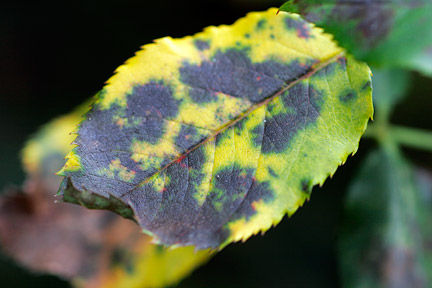Which diseases do plants get?
- Stem To Go

- Aug 30, 2020
- 2 min read
It may be surprising to you that, like humans, plants can also get diseases, whether they be bacterial, viral or fungal. Read on to learn about these diseases and their treatments.
Plants can get infectious diseases and pass them on. Here are some illnesses along with its symptoms and causes:
Tobacco mosaic virus (viral disease)
It is also called TMV and can be spread throughout many different plants. Notably, they can spread easily through petunias, tomatoes and tobacco. It causes plant growth to stunt.
A symptom of tobacco mosaic virus is discoloration in a mosaic-type pattern as seen in the photo below. You may know that the greener a leaf is, the more chlorophyll it has. Since TMV causes discoloration, it lowers the amount of chlorophyll and therefore decreases the rate of photosynthesis. Since the rate of photosynthesis decreases, so does the growth of a plant.

Unfortunately, no chemical can cure a virus-infected plant. There are only the treatments listed below.
Symptoms:
Mosaic-patterned discoloration
Stunted growth
Causes:
Decreased chlorophyll because of discoloration
Treatments:
Purchase virus-free plants
Remove all weeds since these may harbor TMV
Remove all crop debris from benches and the greenhouse structure
Set aside plants with the above symptoms and obtain a diagnosis
Discard infected plants
Rose black spot (fungal disease)
As it is a fungal disease, you may be able to tell that rose black spot is caused by a fungus. As per the name, rose black spot causes leaves to develop purple or black spots. Finally, the leaves turn yellow and fall off. Exactly like how TMV causes stunted growth through decreased photosynthesis, rose black spot causes it too, meaning that discoloration leads to less chlorophyll. This unfortunate disease can be spread by wind or water.

Fortunately, there is a way that rose black spot can be treated. Fungicides are chemicals that can kill fungi. If you spray these, it will be treated. Alternatively, removing and destroying the affected plants will ensure that no further spread occurs.
Symptoms:
Black or purple spots
These then turn yellow and drop off
Causes:
Fungi
Treatments:
Fungicides
Removing and then destroying affected plants
I hope you have become inspired to look out more for any plants you come across! Thanks for reading!
By: Hemlata Pant
Sources:
Freesciencelessons. “GCSE Science Revision Biology ‘Infectious Diseases in Plants.’” YouTube, 27 Sept. 2017, www.youtube.com/watch?v=VHnS8HUtu44&t=26s.
Gary W. Moorman, Ph.D. Professor Emeritus Pennsylvania State University. “Tobacco Mosaic Virus (TMV).” Penn State Extension, 1 Aug. 2020, extension.psu.edu/tobacco-mosaic-virus-tmv.
Heidi Wollaeger, Michigan State University Extension. “Common Questions and Answers about Tobacco Mosaic Virus.” MSU Extension, 2 Oct. 2018,
Plantophiles. “Mosaic Virus Symptoms and Treatments.” Plantophiles, 12 May 2020, plantophiles.com/plant-care/mosaic-virus-symptoms-and-treatments.
“Rose Black Spot.” Royal Horticultural Society, www.rhs.org.uk/advice/profile?PID=270. Accessed 28 Aug. 2020.
Study Rocket. “Monoclonal Antibodies and Plant Diseases – GCSE Biology (Triple) AQA Revision –.” Study Rocket, 8 July 2019, studyrocket.co.uk/revision/gcse-biology-triple-aqa/triple-infection-and-response/monoclonal-antibodies-and-plant-diseases.




Comments